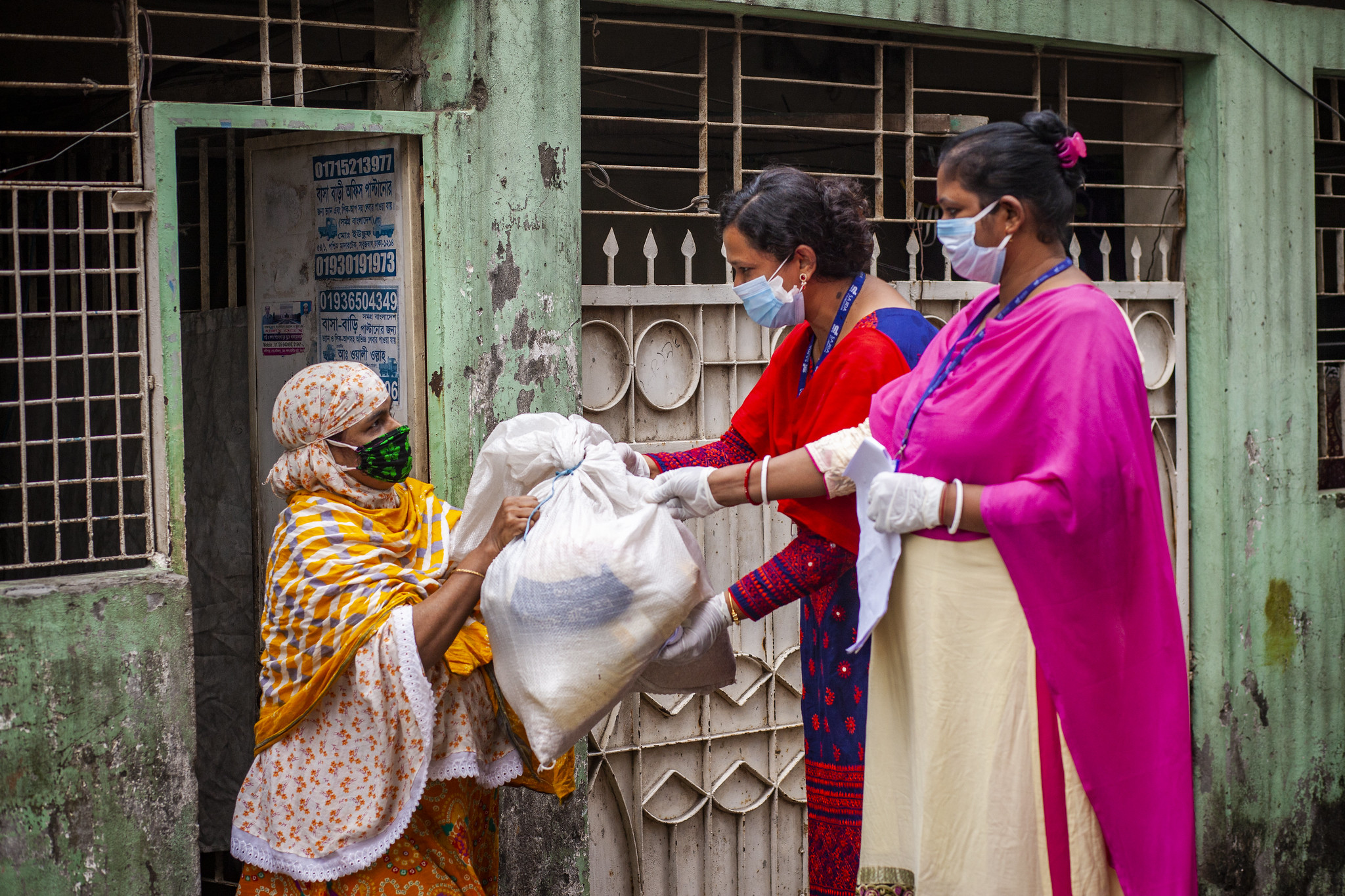In January 2021 members of the Gender and Covid-19 Project published a brief on gender-responsive pandemic planning. Last week they teamed up with Laura Turquet of UN Women to delve further into the topic. Lynda Keeru reports back.
The webinar, ‘How to create a gender-responsive pandemic plan: Addressing the secondary effects of COVID-19’, created an opportunity to go beyond defining problems in the response to COVID-19 and helped participants identify solutions and methods for bridging the gap between research, policy, and practice.
Gender-responsive planning takes into consideration the intersectional needs of women, men and gender minorities in planning, data collection, response, and recovery. This includes considering and addressing how women, men and gender minorities experience differential primary short term, and secondary long-term social, economic, security and health impacts.
The gendered impacts of the pandemic can be divided into primary and secondary effects. The primary effects are the disparities in vulnerability, exposure and health outcomes that are observed between and among women, men, and gender minorities. Secondary effects are related to social, economic, and health impacts that are created or compounded by the pandemic.
A case study of Brazil
In Brazil an online survey revealed a huge disparity in the manner in which various groups were affected mentally by the pandemic; an intersectional analysis showed that 84.2% of Black women reported feeling afraid while 69.7% of White men reporting feeling afraid. In many countries, the COVID-19 pandemic greatly affected sexual and reproductive health services – resources have been diverted away from outpatient care including sexual and reproductive health services for women and girls. There have also been major supply chain disruptions of essential health commodities like menstrual health commodities and medication including contraceptives. In Brazil, COVID-19 has been responsible for 124 maternal deaths thus far. Additionally, only 55% of hospitals that offered legal abortion services in Brazil have been in operation during the pandemic.
Most women in Brazil are overrepresented in the more adversely affected occupational sectors. Those who have to work lack social protection and in most cases are at increased risk of infection due to the nature of their jobs. Women are also the majority in informal work sectors like domestic work; whose work burden has increased with the pandemic. Additionally, community health workers (CHWs), who are essential in primary health care, are mostly women. CHWs in Brazil are not considered health professionals and therefore, only 9% have received personal protective equipment and training to control the disease in the beginning of the pandemic.
Globally, the representation of women in positions of power in the health sector has not changed in the context of COVID-19. Global health continues to be “delivered by women and led by men” with women accounting for 70% of the global social and health workforce and holding a mere 25% of senior roles. In Brazil, the COVID-19 task force in the state of São Paulo had 19 men and only one woman. With more domestic and unpaid work the pandemic will have devastating impacts on girls’ futures and widen existing disparities in what has been achieved thus far in terms of education. Access to technology for learning has also been interfered with and sexual exploitation, early and unintended pregnancies, and forced marriages are on the rise which hinders girls return to school. In Brazil, it has also been observed that there is an intersection of gender and race in relation to education with a much greater percentage of White boys (100%) having access to education material compared to Black girls (60.98%), according to a survey conducted with 105 families in the city of São Paulo.
How to do gender-responsive planning
For a pandemic plan to be gender-responsive, data, priority areas, processes, and partnerships have to be taken into account. There needs to be continuous ethical and safe collection and analysis of intersectional disaggregated data. Once that data is available, appropriate social, economic, and health protections and responses to pandemics can be designed. It is important to target priority areas like gender-based violence, mental health, sexual and reproductive health services, education etc. to protect population health and well-being.
The process of creating a gender-responsive pandemic plan can be organised into three phases: before, during and after a pandemic hits. The ‘before’ phase includes budgeting, planning, and drafting policies. During a pandemic, actors need to carry out continuous assessment, implementation, and adaptation of responses to pandemic impacts. The timing of the rollout of key activities is flexible depending on how far along one is in establishing a gender-responsive pandemic plan. The very last stage of any pandemic is the recovery stage. It requires transition planning and implementation, reconstruction, ‘building back better’ and recording the lessons learned.
Partnerships and collaborations are essential to a successful gender-responsive plan. All partners including governments, non-governmental organizations, civil society organizations and the private sector etc. play important roles before, during, and after a pandemic in the shared responsibility to develop and implement effective solutions. Partnerships should be multi-sectoral as pandemic impacts are felt in all sectors.
How to ‘plan for equal’ in the post COVID-19 pandemic era
‘Plan for Equal’ is a UN Women initiative that aims to guide policy makers to the creation of a more equal and sustainable post COVID-19 world. The plan will bring together a visionary agenda developed by a rich blend of multi-disciplinary talent from feminist economics, feminist ecology, gender studies, and social policy.
In order to achieve this, and an economy that has care of people and the planet at its core, three areas interlink in policy action. These are creating a caring economy which calls for valuing, supporting, and recognizing care for others as well as rewarding those who provide this care. Secondly, there’s a need to generate sustainable livelihoods which should involve moving workers from the informal to the formal economy and addressing a broken global food system. Finally, there needs to be a focus on environmental sustainability.
How do we get there? By developing macro-economic policies that are aligned with social goals and feminist leadership for progressive policy change.
Read the brief for more information about how to create a gender responsive pandemic plan.
Notes
(Moderator) Rosemary Morgan, Department of International Health, Johns Hopkins Bloomberg School of Public Health
The gendered impacts of COVID-19, Brunah Schall, René Rachou Research Institute, Fiocruz Minas, Brazil
How to create a gender responsive pandemic plan, Erica N. Rosser, Department of International Health, Johns Hopkins Bloomberg School of Public Health, USA
UN Women’s ‘Plan for Equal’: Gender equality, social justice and sustainability in the wake of COVID-19, Laura Turquet, UN Women
Photo credit: “COVID-19 emergency response activities, Madartek, Basabo, Dhaka” by UN Women Asia & the Pacific is licensed under CC BY-NC-ND 2.0






